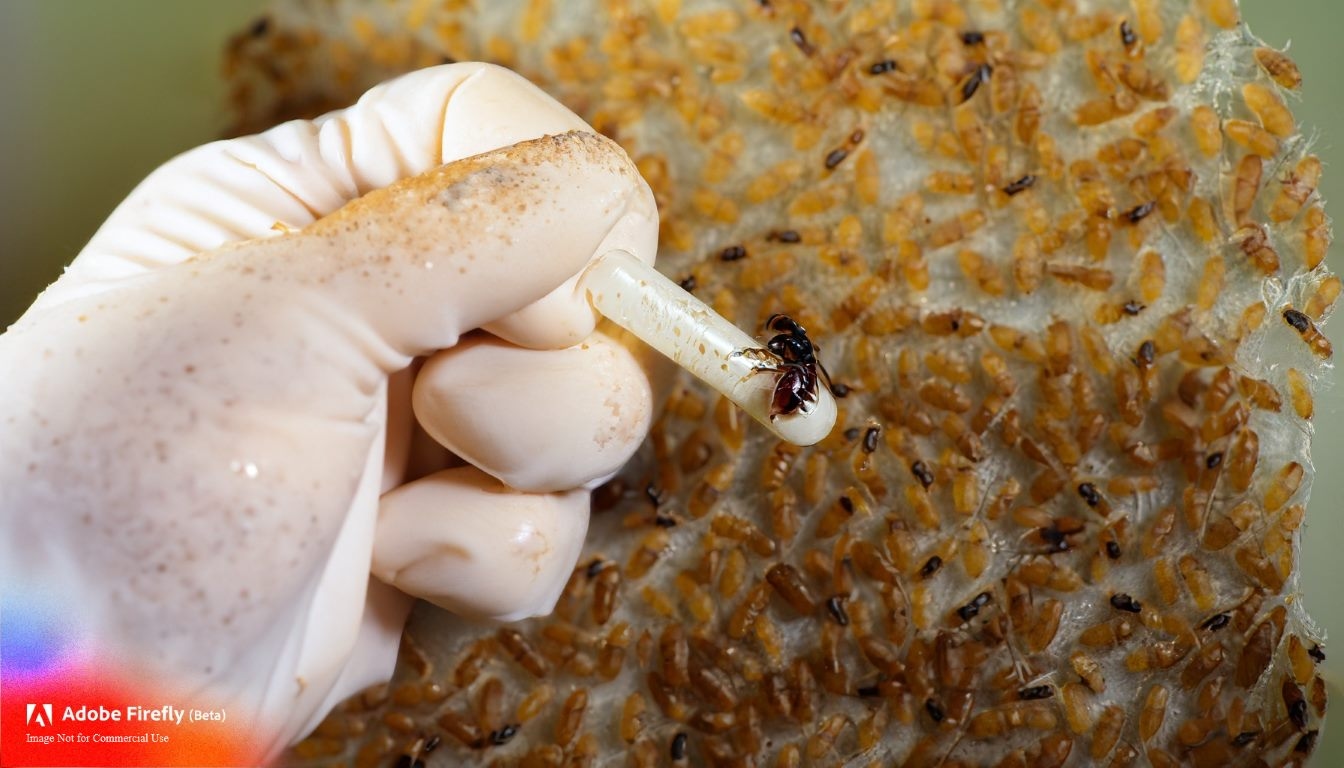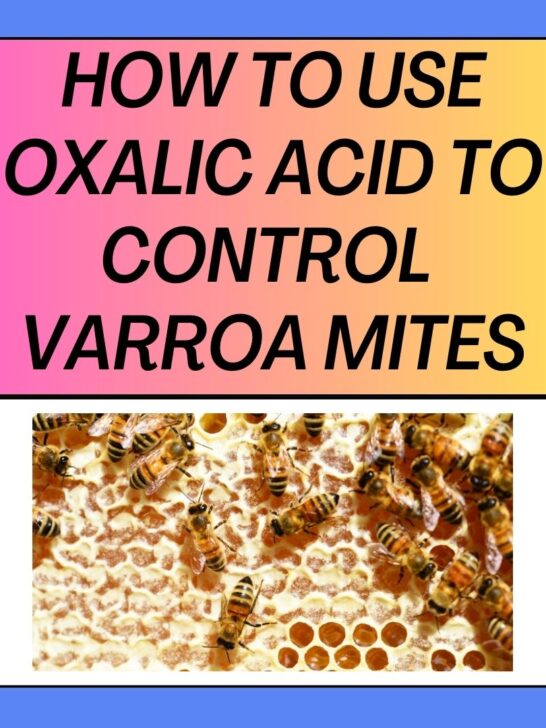As beekeepers, maintaining a keen awareness of the Varroa mite levels in our hives is paramount. Various methods, such as sugar and ether rolls, have gained popularity for measuring mite loads. However, when and how to treat Varroa infestations has sparked numerous discussions within beekeeping circles. In recent years, the application of oxalic acid has emerged as an effective and favored treatment. In this comprehensive guide, we’ll explore the world of oxalic acid, its natural properties, its significance to beekeepers, how it works, and essential cautions for its use.
Post Contents
A Beekeeper’s Guide to Using Oxalic Acid
What is Oxalic Acid?
Amid debates surrounding hive treatments, the issue of using harsh chemicals in beehives remains a contentious topic. Oxalic acid, however, stands out as a natural and organic compound. It’s found in various plants, including vegetables, fruits, and nuts. Interestingly, herbivores are naturally repelled by oxalic acid, making it an effective plant defense mechanism.
Chemically, oxalic acid consists of two carbon, two hydrogen, and four oxygen atoms. It’s a colorless solid that dissolves in water, forming a clear solution. Oxalic acid has diverse applications beyond beekeeping, serving as a cleaning agent and even used in mineral cleaning.
Why Beekeepers Favor Oxalic Acid
Oxalic acid has gained favor among beekeepers due to its direct and effective impact on Varroa mites. This treatment has been successfully employed in Europe and Canada for years, with approval for hive use in the United States granted in 2015. Its natural origin, affordability, and proven effectiveness make it a desirable option for beekeepers seeking sustainable Varroa control methods.
How Oxalic Acid Works?
The exact mechanism by which oxalic acid effectively treats Varroa mites is not fully understood. However, the prevalent theory suggests that when applied correctly, oxalic acid enters the mites through their feet and then circulates within their bloodstream, proving fatal to them. Remarkably, bees tolerate the proper application of oxalic acid without significant adverse effects.
While oxalic acid’s efficacy is evident, it’s crucial to adhere to approved application methods and recommended dosages. Any treatment, when misused, can harm bee colonies. Oxalic acid should only be employed in accordance with documented guidelines to ensure both mite control and bee health.

Oxalic Acid Cautions
Handle with Care
Handling oxalic acid requires vigilance and protective measures. It can irritate the eyes, skin, and mouth and is labeled with a high level of toxicity (Category 1). Proper protective gear, such as gloves and eyewear, should be worn when working with oxalic acid. A respirator is also recommended to prevent inhaling fumes.
Avoid Overuse and Resistance
As with any mite treatment, the risk of overuse and potential Varroa resistance exists. Beekeepers must employ oxalic acid judiciously and strategically. Overuse can lead to Varroa developing resistance, rendering the treatment less effective over time. To mitigate this risk, many beekeepers rotate different treatments to prevent resistance build-up.
When Oxalic Acid Works
Effective application timing is crucial for oxalic acid treatment. Since a significant portion of Varroa mites reside under capped brood cells during the summer, treatment efficacy varies. During the summer, only a small percentage of mites are in the phoretic state, making them susceptible to treatment. However, the majority of mites remain protected within capped cells, reducing the treatment’s reach.
Applying Oxalic Acid
Vaporization Method
The vaporization method is a favored approach for applying oxalic acid. This method involves heating oxalic acid crystals to generate vapor that permeates the hive. Vaporization is efficient, quick, and avoids opening the hive, making it particularly suitable for late fall or winter applications. However, due to the fumes generated, it’s essential to wear a respirator and take caution not to inhale the vapors.
Dribble Method
The dribble method involves applying an oxalic acid and sugar mixture directly onto bees between frames using a syringe. This method is suitable for smaller hive operations and offers an efficient way to apply the treatment. However, since the bees may consume small amounts of the mixture, this approach is best for a single treatment rather than repeated applications.
Conclusion
Oxalic acid stands as a valuable tool in the beekeeper’s arsenal against Varroa mites. Its natural origin, proven effectiveness, and compatibility with natural beekeeping principles make it a favored choice among many beekeepers. By adhering to proper application methods, dosage guidelines, and cautions, beekeepers can utilize oxalic acid as a strategic and effective Varroa control solution.

94% of pet owners say their animal pal makes them smile more than once a day. In 2007, I realized that I was made for saving Animals. My father is a Vet, and I think every pet deserves one. I started this blog, “InPetCare”, in 2019 with my father to enlighten a wider audience.
